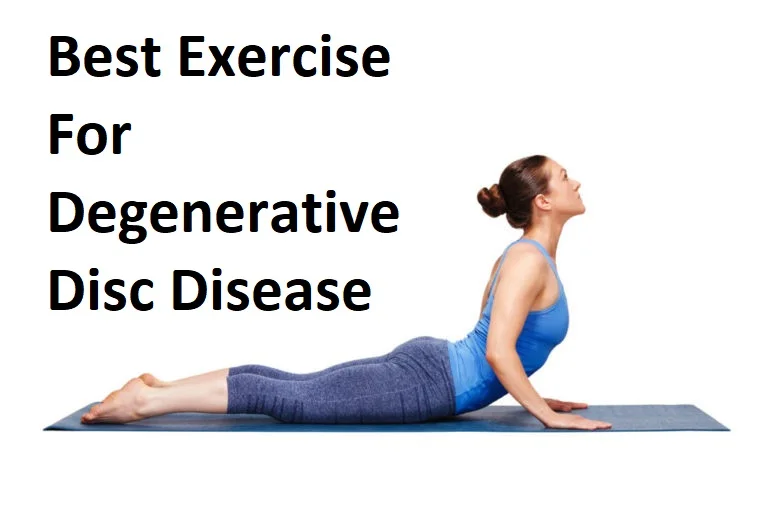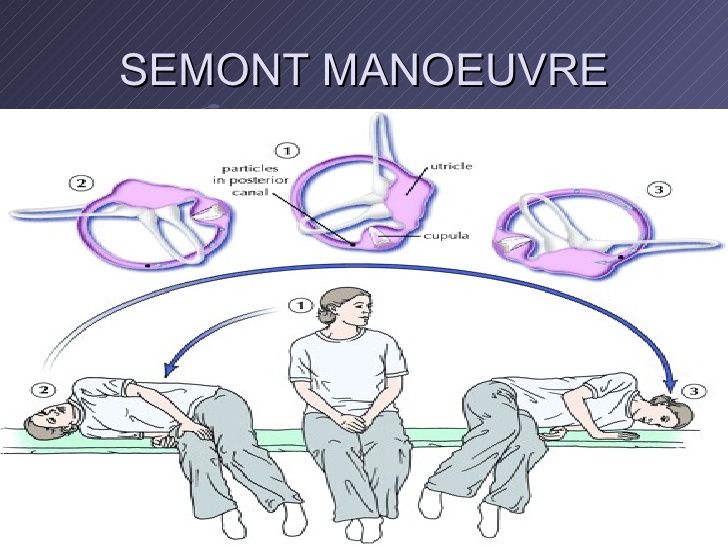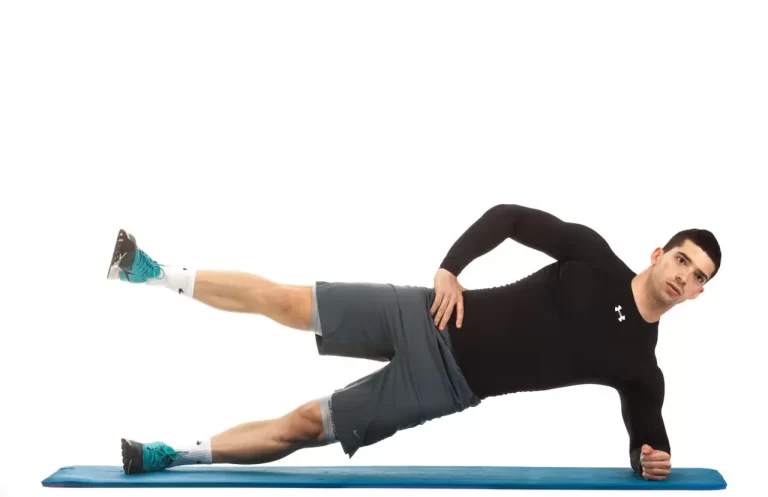Best Exercise For Degenrative Disk Disese
Table of Contents
Introduction
When it comes to degenerative disc disease, it’s essential to engage in exercises that promote strength, flexibility, and stability while minimizing stress on the affected discs.
The discs located between two vertebrae act as shock absorbers on the back and absorb the impact of daily activities. They can wear out as we age, causing only mild discomfort to some but seriously impairing the quality of life.
If you have a degenerative disc, you are not alone and there are ways to manage your condition through exercise. Start slow with these exercises and just do what works for you. take care of yourself while exercise you feel any type of pain stop the exercise.
Degenerative disc disease is the wear and tear of the discs in the spine. Spinal discs are the rubber cushions between the vertebrae (bones of the spine). spine work in our body as a shock absorber and helps with movement, bending, and twisting type of activity comfortably. at a certain age, people become degenerate over time and this is a normal part of aging.
Symptoms
The most common symptoms of degenerative disk disease are lower back pain and neck pain. You may experience pain that is different types of pain such as:
- Irregular pain, you may feel pain for weeks or months at a time.
- A feeling of numbness or tingling type of sensation in your arms or legs.
- Radiates down your buttocks and lower back.
- Worsens with sitting, bending, or lifting.
Risk factors
- Acute injuries, such as falling.
- Obesity
- In biological sex, with women mostly experience more pain than the male more.
- Smoking.
- Working a physically demanding job.
Causes of degenerative disc diseases
- Dry out
- Crack
- alcoholism
- tumor, or a stroke
Best Exercise for Degenerative Disk Disease
Standing Extension

Start with this exercise in a standing position with good posture or straight. Now place both hands on your waist. Now with the help of your hands push your pelvis forward and stretch your spine until you feel discomfort. Follow the spine extension with your neck flexion so that you end up with this exercise facing the ceiling.
Start with 10-15 repetitions and perform 2-3 sets per day.
the standing extension exercise you can perform at the break time from your work you can also perform in the sitting position.
This should not cause any pain. If you feel pain end of the exercise it is not good for your condition. In that condition, stop and try some of the other exercises comfortable exercise.
Prone Lumbar Extension
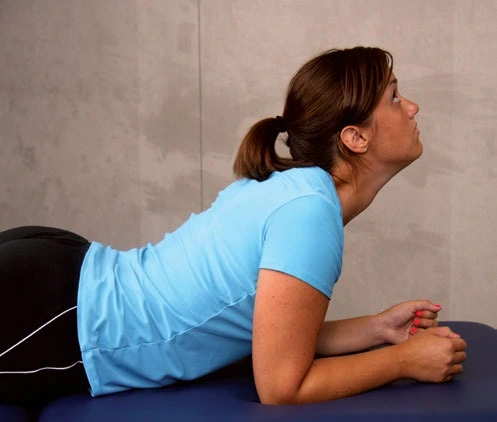
start this exercise in the prone position on the plinth or mat.(lying on your stomach) and slowly take yourself up on your elbows while keeping your hips in contact with the floor. your neck should be slightly extended.
after that Hold the spine extension position for 10-15 seconds before returning to the prone position (lying face down).
Gradually increase to holding duration to around 30 seconds. your Aim should be 10 to 15 repetitions of this stretch in the starting time.
Initially, you may not be able to tolerate this hold duration very well, so make sure you start slowly and carefully. If there is any pain or discomfort, try a different exercise or take rest.

Cat camel exercise
Begin this camel exercise in a four-legged position. Inhale and let your belly “drop” to the floor as you look up at the ceiling.
Follow this by exhaling and slowly rolling your spine while pressing your hands into the floor and bending your neck slightly to look at your feet.
Aim for 10 repetitions of this stretch per session and performed 2-3 sets per day.
Bird Dog exercise
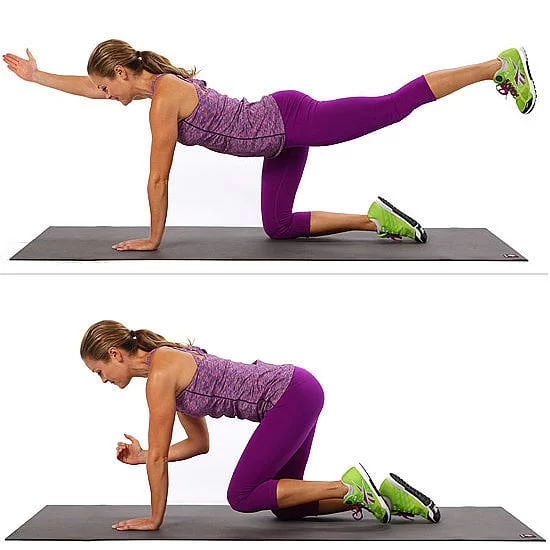
Strat Bird dog exercises with the quadrupled position(on your hands and knees)your shoulders and knees positioned under your hips.
then you should contact your core muscle as hard as you can before beginning any spine movement.
While contracting your core, raise your left arm and reach it forward until it is aligned with your torso; at the same time, kick your right leg backward until is it aligned with your torso. It is important to not arch your low back as you do this.
Hold this Bird dog position for 4-5 seconds before slowly returning to the original position. Repeat with your opposite arm and left leg.
Alternate sides for 10 repetitions.
Only extend your shoulder and leg to where it is comfortable and don’t make an arch on your low back.
Piriformis Stretch
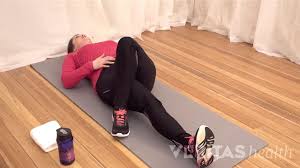
For piriformis stretch, you should start with the side-lying position or prone position, or sitting position. there are many methods for the piriformis stretch. take the side-lying position and then your upper hip slightly flexed also your knee should be flexed and put your upper ankle put on the lower knee.
then give a slight press on your upper knee throughout the plinth. and then hold this position or stretch for 30 or 60 seconds.
you should take 3 repetitions per session and 2-3 sets per day.
Pelvic Rotation or Abdominal Bracing

The pelvic rotation exercise provides the benefit to develop deep core stabilizers, it works as it will take pressure off the disc space and help return the spine to its original position. this exercise, the focus is on contracting the transverse abdominous muscle(TA). transverse abdominous muscle this muscle work to stabilize the spine to protect against flexion and extension pressure on the spine.
start with the supine Laying position with knees in flexion and hip in flexion and feet flat.
Contract and pull in the deep and lower ab muscles without holding their breath.
As this movement occurs, the lower back will flatten down to the floor, putting your spine in a neutral or normal position.
Hold this position for 10-15 seconds and repeated it 20-25 times.
Plank
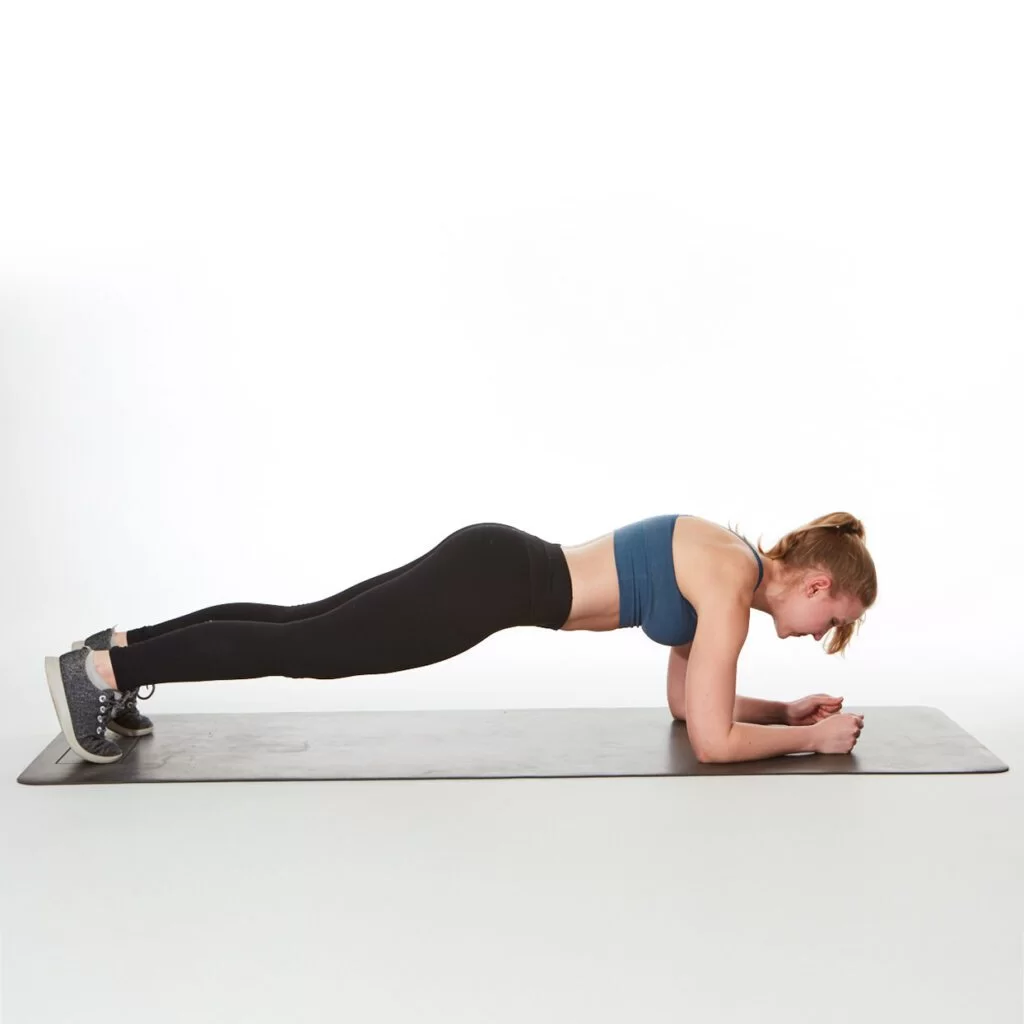
this is a little bit difficult exercise you can add on this exercise during the progression duration. Start with the prone position(lying on your stomach with your forearms against the plinth or floor).
contract your core muscles and raise your body so that you can be relaxed throughout the body and give pressure on your forearms and toes.
you have to make sure that your spine is in a neutral or normal spinal position (not dropping in the low back).
Hold the plank or lift position for 20-30 seconds, Then back to the normal position on the floor. your goal should be for 3 to 5 repetitions of this exercise this repetition is enough.
you should keep your whole spine in a straight position throughout the entire exercise which is necessary.
Calf stretching

Start with the hold the chair for balance. Bend your right leg. Step back with your left leg and slowly extend it behind you. Press your left heel into the floor. You should feel a stretch in the calf of the posterior part of the leg. Hold the position for about 20-30 seconds this hold is necessary. Repeat twice, then switch legs. For a bigger stretch, lean forward and bend your right knee deeper, but don’t let it go past your toes. the calf stretch is the stretch itself. there is another method that requires a hand towel or napkin it’s called self-stretching. This is the calf stretching exercise.
start with sitting on the mat or plinth with both legs straight.
Make the Loop of the towel or napkin around the ball of one foot. Hold both ends of the towel.
Keeping the legs straight, pull the towel with your own effort toward the body, and hold the position for 30 or 60 seconds and back to the original position. Then, relax for 30 seconds.
Repeat the stretch three times per session do 3 sets per day then do the same on the other side.
Side plank

The side plank is a progressive step of the plank exercise that works this exercise focuses on the quadratus lumborum muscle as well as the gluteus medius of the hip joint and tensor fascia lata muscle (TFL). These muscles are responsible for hip joint stability.
includes the following steps:
Lie on the right side of your body, right leg slightly bent and left straight, foot on the ground. Make sure your right hand is directly under your right shoulder and your arm is extended in front of you. Tighten your abdominal muscles, and lift your right hip off the floor. Lift your right knee off the floor to extend your right leg and bring your feet together. Keep your body straight, hold the position for 10-30 seconds. Slowly return to the original position of the exercise and switch to the other side. You should repeat this exercise about 3-5 times per session.
Hamstring Stretch
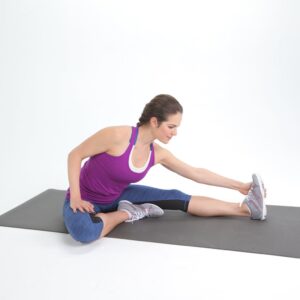
Hamstring stretching can take sitting or standing and in the supine position, you can also take self-stretching through the wedge and the towel.
You can take this hamstring muscle stretch by sitting position on the mat or floor and trying to touch your toes. and hold this grip for 30-60 seconds then back to the normal position. If you are not comfortable with this method so there is another method for this stretch you can need a chair for this self-stretching and follow these steps: Start with sitting on a chair without any back support.
Place another chair in front of you this is also one type of self-stretching.
start with the put your one leg on the floor, then put your other leg up onto the seat of the chair in front of you. Stretch the hamstring gradually. Hold the stretch for 30 or 60 seconds which is the minimum hold for any stretching. gradually increase the hold duration to a minute over time.
You should perform this stretch twice per session initially and then do 2-3 sets per day if there is no pain. There are two types of hamstring stretching first Active(self) hamstring stretching and passive(by healthcare) stretching. self hamstring muscle stretching is done against resistance and gravity without any assistance. For DDD, you should be recommended self-stretching (great for this condition) because it is more beneficial for the range of motion and for reducing the pain and this stretch provides relaxation to the calf muscles.
Psoas muscle stretch
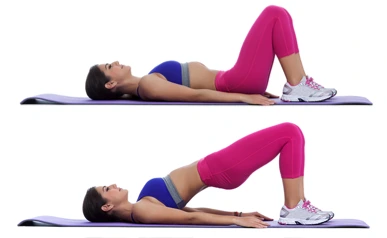
There are many exercises that can stretch the psoas muscle. Some of them are frog pose, side plank, and lunges. Another stretch for the psoas major muscle is the swallow bridge exercise. The steps in this exercise are:
Lie on the floor. Keep your hands on the ground. Raise or lift your pelvis and your feet are flat on the floor or mat. Lift the entire pelvis into the air and hold this position for 10 -15 seconds. Return to the starting position and repeat. You can repeat this two or three times in one session.
You can also be called this exercise a bridging exercise. you should do 12-15 repetitions per session and 2-3 sets per day.
Double knee to the chest
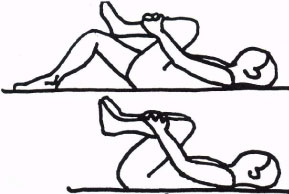
This exercise works the muscles of the lower back and reduces tension on the spine while working the thighs and hip muscles.
Start in a supine position (back flat) with your shoulders flexed, hips flexed and knees bent.
Step 2: Gently lift your right knee up and toward your chest. Keep one leg straight. Step 3: Grab the lifted knee with both hands and gently pull it up towards your chest. Hold the stretch for 30 -60 seconds which is a compulsory stretch, and release and repeat on the other leg. You can repeat this exercise up to three times a day. you can perform this exercise 15-20 times per session. this is the modified version of the single knee-to-chest.
Back flexibility exercise(isometric back exercise)
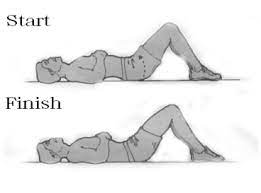
Start with the supine lying position with both the hip in flexion and both knees in flexion position on the floor or the plinth. Tighten your abs to pull your lower back up, away from the floor (B). For this exercise you need a napkin you can put under the abdomen area which developed the contraction under the abdomen muscle and provide strength to the lumbar muscles. Hold the position for about five to ten seconds which is necessary and then relax or back to the normal position. Straighten your back by pulling the button to the floor (C). Hold for five seconds and then relax. repeat Start with five repetitions a day and slowly go up to 30. Repeat this exercise about 3-5 times.
Some pilates moves
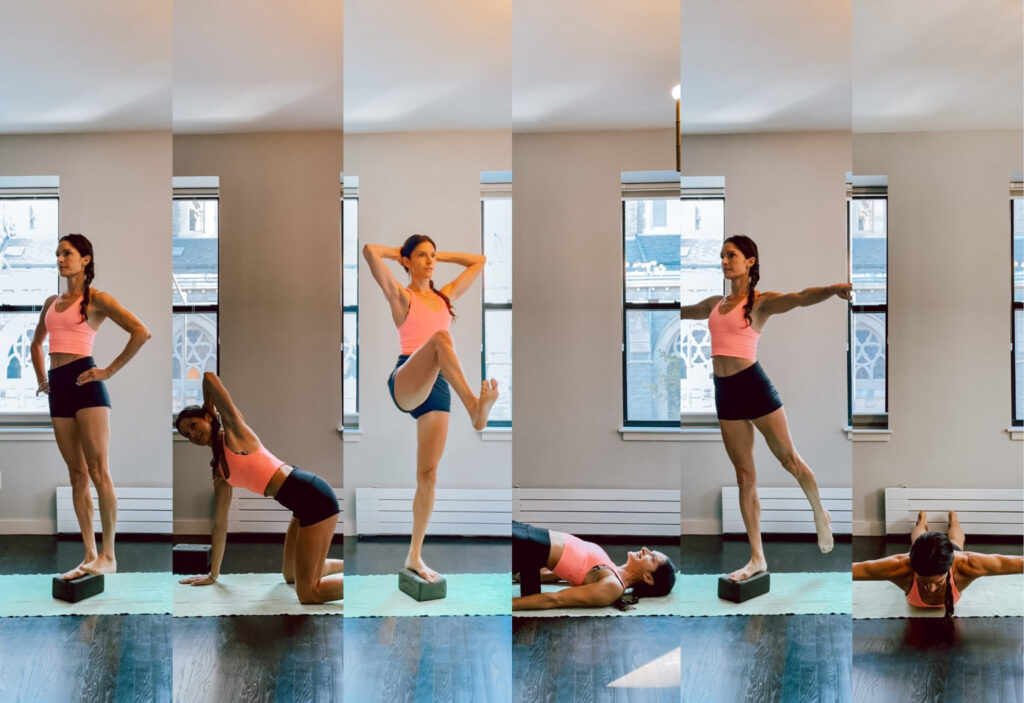
Pilates combines stretching, strengthening, and abdominal exercises. As instructed by an experienced instructor, this can help some people with back pain. Remember to tell your instructor about your back pain, as you may have to miss some exercises. You can find more information about back exercises for women here. you can add the duration for this exercise to five to ten minutes which is enough for this exercise.
Aerobic exercise

Aerobic exercise provides strength to your lungs, heart, and blood vessels and can help you lose weight or make perfect your body. Walking, swimming and cycling can help reduce back pain. Start with short sessions and build over time. If you feeling pain in your back, try swimming the water supports your body during swimming. Avoid body twisting blows during swimming. for aerobic exercise there are add the warmup duration cool-down duration and exercise all duration are about 30 minutes.
Wall sits

You can extend this exercise. you should seek help from a doctor or someone. Start with the Standing position away from the wall about 10 to 12 inches, then take a lean back position unless your back is touched against the wall. Slowly drag your back against the wall until your knees are slightly in a flexion position, or developed the pressure between your lower back against the wall. Hold the position for 5 or 10 seconds depending on your capacity, then carefully slide back down the wall.
Safety Considerations
It’s easy to go with degenerative disc disease exercises you have to add the progression exercise after a few days. Take your time to understand the exercise. Don’t push yourself too hard for some specific exercise, and don’t extend the range of motion beyond your comfort zone.
If you feel pain while doing any exercise for this condition, reduce the intensity, and also reduce the repetition, and frequency of the exercise until you find what works for you. Concern your doctor if you experience any long-lasting discomfort after these exercises or during exercise.
Avoid exercise while degenerative disk diseases
There is no specific list of exercises that all people with degenerative disc disease should avoid. Regardless, it is generally recommended to avoid exercises that cause pain, discomfort, or tenderness.
It is also best to avoid vigorous exercise such as running or jumping on a trampoline at the beginning of recovery. These exercises put more stress on the discs.
avoid anything that causes physical pain, especially in the back, as this is a sign that the exercise is irritating the damaged disc.
Avoid vigorous exercise or all high-impact exercises, including jumping, skipping rope, hard step aerobics, and scampering, avoid this exercise immediately after a disc injury.
talk to a physical therapist before starting a new exercise routine, as a person may need to develop core strength before practicing safety.
avoid lifting weights unless a health care provider says it is safe to do so talk to a qualified personal trainer or physical therapist about proper form before doing sit-ups, crunches, or other core exercises.
How can I prevent degenerative disk disease?
You can prevent or avoid the progression of spinal degeneration disk through exercise and lifestyle changes. Some of these include which are prevent the condition:
Achieving and maintaining a healthy body weight.
Avoiding or quitting smoking.
Exercising regularly to increase strength and flexibility.
Does degenerative disk disease increase with other conditions?
Degenerated disks may increase the chances of your risk of developing other spinal conditions which are common. Common spine problems with degenerative disks include:
Osteoarthritis.
Scoliosis.
Spinal stenosis.
Spondylolisthesis.
Spondylolysis.
A note from Samarpan Clinic for this condition:
Degenerative disc disease occurs when the discs in the spine break down. When these discs wear out, people usually experience back pain and stiffness. You may find pain relief with non-surgical treatments such as physical therapy and spinal injections. For some people, home treatments such as heat and cold therapy can reduce pain. If the pain is severe, you may benefit from spinal injections or spinal surgery.
A spine specialist can help you decide which treatment is best for you. sampan clinic suggests investigation such as x-rays and then consulting with physiotherapy they provide you with Physical therapy and the add-on heat therapy and then move on to the exercises and then strengthen exercise. which are provide pain relief and maintains the spine muscles’ flexibility and core strength.
FAQs
for this condition start with low-impact exercises stretching exercises which is focused on the flexibility of muscles and then strengthening exercise which is focused on the strength of the muscles and the range of the muscle. then you can add high-impact exercises such as walking, water aerobics, yoga, and Pilates. Lifting heavy weights or running. all strength exercises and stretching and high-impact exercise is great for this condition.
Physical therapy is always good for the degenerative disc disease recommendations of physical therapy for the treatment of degenerative disc disease. Physical therapy is focused on exercises that are designed to prevent lower back pain and make your muscle stronger. physiotherapy is also effective at helping your back strengthen your muscles
(strength and flexibility).
No, you can not recover totally from the degenerative disc disease because it is the effect of age. three are Many treatments for degenerative disc disease which are only reducing symptoms of the condition. doctors or physiotherapists only can reduce the symptoms of the condition and temporarily provide treatment.
If you are experiencing pain in the muscle or soft tissue from your degenerative disc disease, massage therapy may reduce the spasm of the muscle. Massage therapy involves many methods such as kneading type of massage which provide relaxation or reduce spasm from tight paraspinal muscles, which further helps reduce pain while promoting the increase in blood flow.
there are many things that can prevent lower back pain and the risk or progression of DDD. You should avoid the habit of smoking, or better yet, do not smoke.
Be active – regularly do exercise(stretching, stretching)to increase the strength, mobility, and flexibility of muscles and provide support to the spine.
there are 10 or more Degenerative Disc Disease Exercises You should try it
The spine stabilizing exercises are listed below:
Walking. Walking is a low-impact activity (you can perform daily)that can help prevent the progression of DDD. …
Hamstring Stretch. …
Stationary Exercise Biking. …
Cat-Cow Stretch. …
Back Extension. …
Knee-To-Chest Stretch. …
Bird Dog Stretch. …
Pelvic Tilting Exercise.
Vegetables play a major role in fighting against inflammation and back pain from degenerative disc disease. such as food Sweet potatoes, carrots, and beetroot are all great vegetables to eat for spinal health which increases the hemoglobin level in the body. greens vegetables such as broccoli are also excellent choices to add to your meals. However, fruits can help as well.

